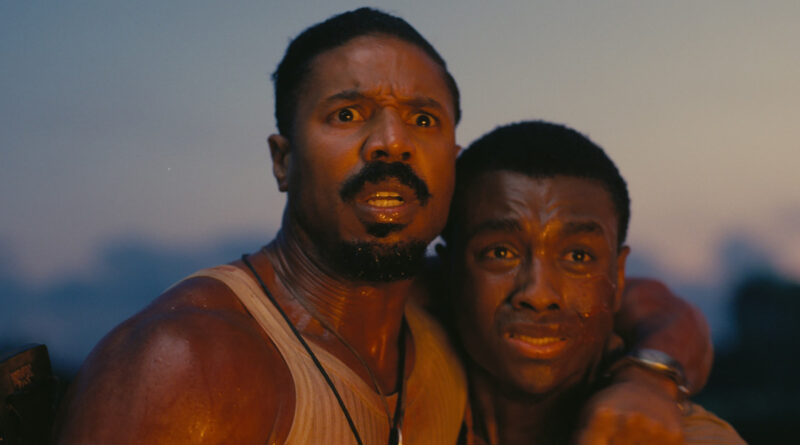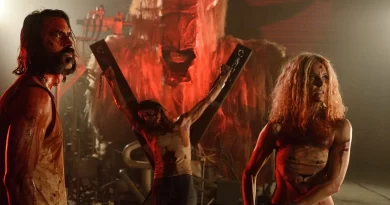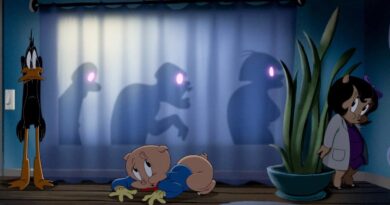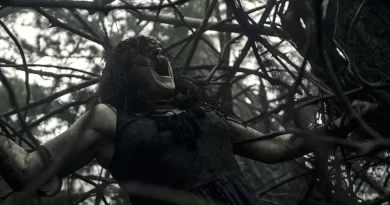Sinners (2025)
Ryan Coogler’s Sinners puts a refreshing, I would even dare to say thought-provoking, spin on the myths, legends, and stories of vampirism. This time, it’s told through the filter of racism in the American South of the Jim Crow era. It also paints vampirism not in the classically broad black-and-white strokes of good and evil; it exists in a murky gray area where an argument in favor of losing your soul and living eternally, not just by night but also off the blood of other people, is made. Coogler, who also wrote and produced the film, never directly states what side of the argument he falls on; he merely presents it, and it’s up to us, the audience, to decide for ourselves what we think. That’s saying something, given how thinking is typically not something horror movies encourage.
There are hints of the occult and mysticism. A brief prologue, for example, explains that some West African and indigenous American cultures believed in musicians whose playing was powerful enough to lift the veil between the living and the dead. Although this could be a positive experience, it could also allow for evil to break through. Despite those small touches, the story relies on much of the traditional vampire tropes – i.e. they can’t stand garlic, they burn to cinders when exposed to sunlight, they can only be invited into an enclosed space, and being stabbed by wooden stakes will kill them. No mention is made of coffins, though. And given the title’s Christian connotations, to say nothing of a key scene in a church, I was very surprised that no crucifixes were used or even acknowledged.
Taking place mostly in 1932, the story’s magic musician is Sammie Moore (Miles Caton), a young blues artist from the Mississippi Delta. He’s recruited by his identical-twin cousins, nicknamed Smoke and Stack (both played by Michael B. Jordan), to play guitar at the opening of their new all-black juke joint, a former saw mill purchased from a landowner (David Maldonado) who may or may not have ties to the Ku Klux Klan. Veterans of the First World War, Smoke and Stack have returned from Chicago as cynical, ruthless gangsters addicted to the power ill-gotten money allows them to wield in a racist world. Naturally, both men have unfinished business with the women they left behind. Mary (Hailee Steinfeld), who has some black ancestry but can pass for white, once believed Stack’s proclamations of love but now resents being abandoned. Smoke, meanwhile, reunites with his estranged wife Annie (Wunmi Mosaku), who believes in and practices bayou spells despite a past tragedy they failed to prevent.
Vampires officially enter the tale with the introduction of white Irishman Remmick (Jack O’Connell), who immediately bites and transforms a Klansmen husband-and-wife duo (Peter Dreimanis and Lola Kirke). Attracted on a supernatural level to the guitar music Sammie plays at the juke joint, all three pose as progressive whites in a folk band, and of course they beg the skeptical twins for admittance. This is the point at which I’ll stop describing the plot in such detail. Needless to say, many of the joint’s staff and customers will be lured outside and transformed into vampires, literally and figuratively breaking all hell loose. Most of what unfolds is more conventional than I would have liked it to be; there’s a lot of blood and several scenes of stake stabbings, and like George Clooney and Quentin Tarantino in 1996, those who are still human have to survive barricaded in the joint from dusk till dawn.
As would be expected in a horror movie, there are plenty of jump scares – or pop-out scares, as I prefer to call them. They’re effective, but only in the moment; unless you’re completely new to the horror genre, specifically vampire horror, there’s nothing that shakes you to your core, that leaves a lasting impression. However, I found Coogler’s idea of mixing vampirism with America’s history of racism compelling. He doesn’t go for the campiness of the Blacula films; he makes serious parallels. He even poses an imaginary but still uncomfortable question: Would America be a more unified country if it was populated by vampires? A scene outside the juke joint suggests that it might be; as Remmick dances an Irish jig, we notice that the vampires dancing circles around him are a unified mix of black, white, and Asian. They may be cursed to soulless immortality and an unending thirst for blood, but at least they’re part of a community where no one is judged by the color of their skin.
The film’s best scene is an anachronistic dreamscape vision of the juke joint customers dancing alongside tribal African drum players and hip-hop artists. It happens as Sammie plays his guitar, lifting the aforementioned spiritual veil and allowing past and future spirits to temporarily enter our realm. It’s not as B-movie as I’m making it sound; it’s a trancelike, surreal visual metaphor that speaks to the cultural and emotional significance of music. Even with numerous subgenres, even with its evolving nature, the power it has to unify or divide exists in all cultures. This is the special something that makes Sinners worth your time and money. Had it not been there, it would have been just another vampire movie – serviceable, but nothing a thousand other vampire movies haven’t already given us.




